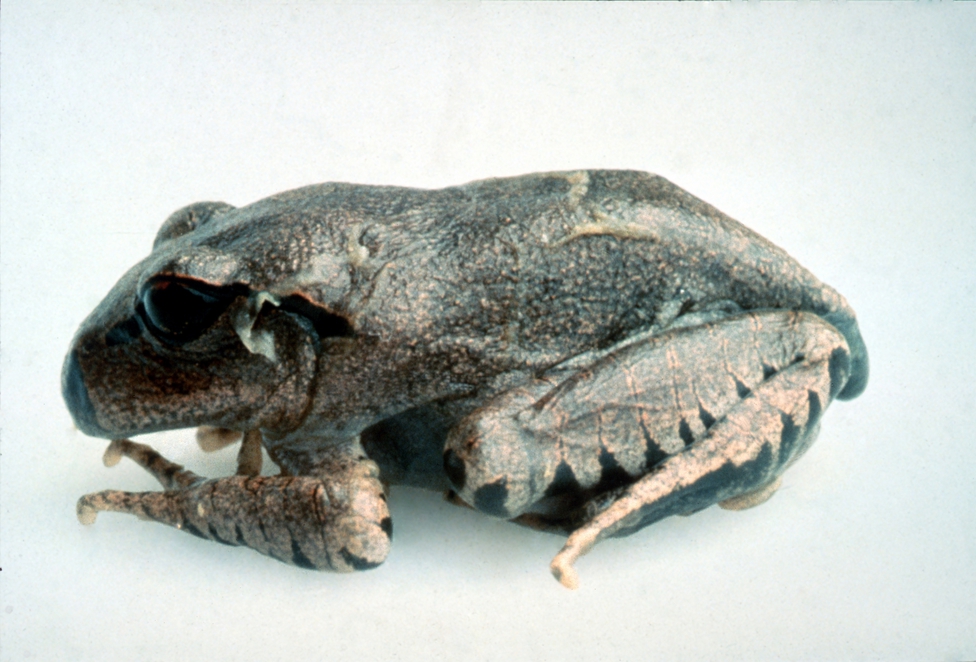Chytridiomycosis Sucks the Life Out of Frogs
Posted on Categories Discover Magazine

Chytridiomycosis, the most destructive disease to ever affect vertebrates, moves swiftly. As a doomsday disease affecting amphibians, it often begins when a microscopic zoospore propelled by a squiggly flagellum tail collides with the skin of a frog. From there, it penetrates the tissue and through a complex process widens the infection and produces new zoospores.
The disease tends to affect the keratin-producing skin in the frog’s groin and legs and throws off the amphibian’s normal regulation of water and electrolytes. Like humans, frogs use sodium and potassium to drive electrical processes, including those in the heart. Here’s what we know about the disease.
Chytridiomycosis In Frogs
As the disease tears across the frog’s skin, outward symptoms begin to appear. It may stop eating and behave oddly, reversing its normal nocturnal (or diurnal) cycle and holding its body in an off-kilter position. The skin may turn red or gray and begin to peel. A heavy depression may set in, according to the Australian Government, along with seizures.
No one knows for sure how chytridiomycosis kills frogs, but theories point to severe imbalances in water and electrolytes, leading to a heart attack. The disease hits hard and fast, leaving behind bodies that decompose quickly, making it hard to track. Still, scientists can say the disease has been battering amphibian populations in the Americas, Africa and Australia for decades.
Why it has affected some areas of the world more than others, scientists still don’t know. A related fungal species that infects salamanders and newts also affects Europe and Asia, where it originated.
Read More: How the Frog-Killing Fungus Does Its Dirty Work
Devastating Effects of Chytrid Fungus
Chytridiomycosis has led to the decline or extinction of more than 200 species of amphibians and affected more than 350, according to the Cornell Wildlife Health Lab. For reasons not fully understood, some species are immune to the fungus, or highly resistant. These include the American bullfrog and the African clawed frog, which may act as carriers.
The International Union for the Conservation of Nature estimates that 41 percent of worldwide amphibian species are now threatened with extinction.
The organization has called chytridiomycosis the “worst infectious disease ever recorded among vertebrates in terms of the number of species impacted, and its propensity to drive them to extinction.”
What Can Be Done About Chytridiomycosis?
Scientists are working to understand why some species are resistant, in hopes of finding a defense. According to the Amphibian Ark organization, the immune frogs could benefit from having symbiotic bacteria present on their skin, something to block the zoospores. Other frogs may produce, in their poison glands, a substance that kills the chytrid fungus.
It seems to prefer cool temperatures and requires moisture to propagate, making arid regions inhospitable. According to a recent study, the fungus now affects most of Africa and has largely spared Northern Africa, home to three different deserts. The study found that chytrid lived on the continent pre-2000 and then took off after the millennium and multiplied greatly.
Experts say: Don’t move frogs or other amphibians from one habitat to another and wash off your boots when leaving a watery area. Scientists aren’t yet sure if shoes or other wet equipment can transmit the fungus.
Human Defenses Against the Chytrid Fungal Infection
Chytrid has never infected a human, and our bodies are adept at repelling fungal invaders, anyway, according to the Yale School of Medicine.
While outside, we’re awash in fungal spores. But our immune system protects us, along with our body temperature, which is normally too high to host a fungus.
Infections only become more likely when a person has a compromised immune system.
Read More: What Is Slime Mold?